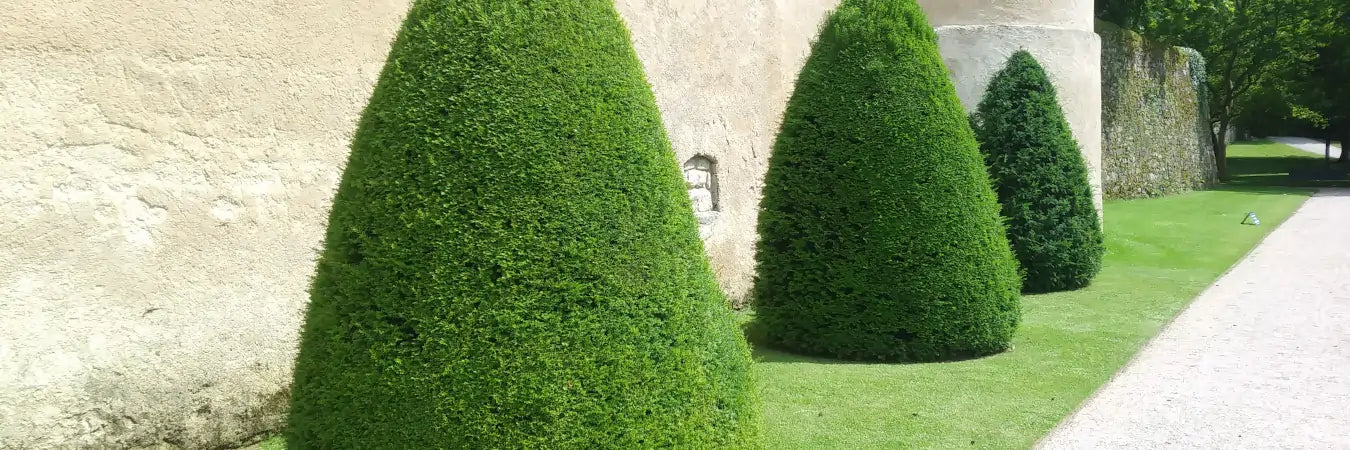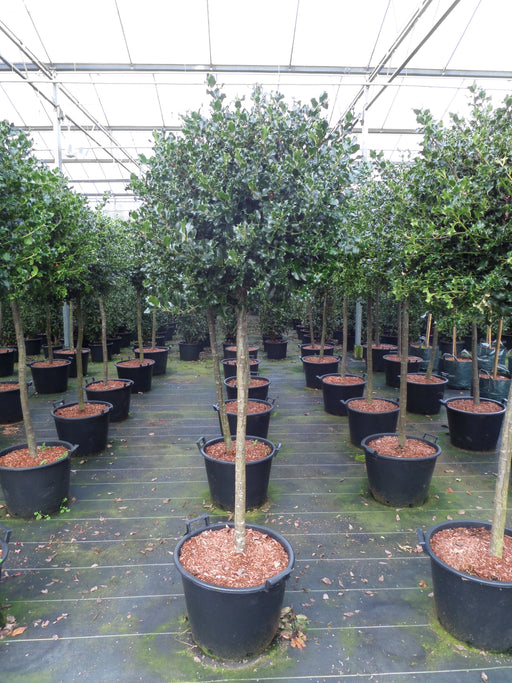Symmetrical Hedging for Your Outdoor Space
Topiary hedging is popular for it services both aesthetic and functional purposes, acting as focal points, garden borders and privacy screens. The foliage is carefully trimmed to create a symmetrical shape, making it ideally placed as a central feature within your outdoor space. In theory, almost any plant can be trimmed and pruned with enough time and care to create the desired shape, but here you will find the most popular varieties used.
Looking for something in particular?
We supply a number of topiary shapes and sizes, especially in Box, Yew and Euonymus Green Spire, although during the season, we often have other topiary hedging plants available, including Pittosporum ‘Silver Ball’. If there is a topiary hedge you are specifically looking for, call us on 01252 714552 to discuss your planting requirements.
Topiary Hedges: Frequently Asked Questions
How do I shape topiary?
Although topiary shaping is often carried out mechanically here on the nursery, to maintain its artistic and elegant aesthetic, regular maintenance is essential. Regularly trim new growth with sharp, clean shears, cutting just above the leaf nodes to encourage dense branching. Prune gradually, allowing the plant to fill out the desired shape over time. Regular maintenance, including watering, feeding and pest control will ensure your topiary plants remain healthy for years to come.
When should I trim topiary hedges?
The best time to trim your topiary hedge is during the growing season in the early or late summer. Not only are the leaves firmer and more resilient, but this will avoid exposure to frost damage that can occur during the autumn and winter months. Pruning can take place as little as once a year, but may be needed more frequently if your topiary tree grows particularly fast and depending on the look you are trying to achieve. Most people will opt to trim their topiary twice or even three times a year to maintain
a crisp look to the shape.
What plants are used for topiary?
Box Topiary (Buxus Sempervirens)
Box (Buxus Sempervirens), is also known as Common Box and has been used for an extremely long time to produce small hedges and topiary. Being evergreen, it produces a mass of small green leaves and grows well in many situations. Topiary Box clips well and retains its shape, making it a popular choice for formal gardens. We still sell Box topiary, however you must be aware that there are two significant problems that are currently widespread throughout the UK and it will require regular treatment for to keep your topiary looking healthy. Box Moth Caterpillar and Box Blight have become prevalent throughout the UK and we are seeing it appear regularly in peoples gardens so keep an eye out and treat appropriately. We do not recommend using Box for topiary any longer due to these reasons but will still sell it to those who are prepared to look after it properly. The best substitutes for Box are Yew and Euonymus Green Spire which do not suffer any of the same afflictions as Box due to them being from a different plant family.
Yew Topiary Plants
Yew (Taxus Baccata) is also known as English Yew or Common Yew, and being native to the UK, it has been a popular choice for topiary for many centuries. Yew topiary plants clip extremely well and can be used to make very tight topiary shapes, whether that be cubes, cones or feature shapes. Yew is slow growing and dark green and can be slowly trimmed into almost any shape. Visit almost any formal garden in this country or mainland Europe and you will find Yew being used to create topiary designs of all shapes and fashions.
Euonymus Green Spire
Euonymus Green Spire is a relatively new plant to the horticultural world and has risen to colossal popularity in the last few years due to the problems associated with Box. It is visually very similar to Box and behaves in much the same way. It has small green leaves and grows slowly, making it ideal for small hedges or topiary shapes. We often find that those who are not familiar with plants mistake Euonymus Green Spire for Box as they look so similar to each other. So use it instead in exactly
the same way as you would with any Box plants.


